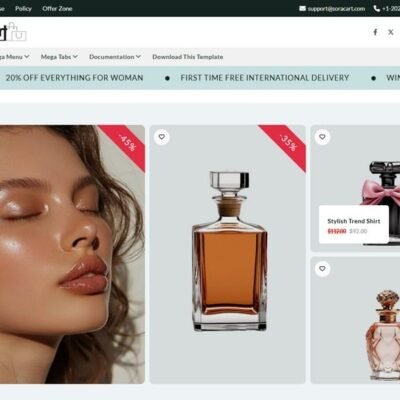Automated Rules allow you to save time and increase efficiency by automating changes to your campaigns, ad sets, and ads when specific conditions have been met. In this post, you’ll learn how to access and set up these rules to enhance ad performance.
To access Automated Rules, use the All Tools menu in Ads Manager and you’ll find it within the Advertise group.
Click to create a rule, and you’ll get the following options…
Let’s go through each of these rule templates.
Custom Rule
Goal: Create your own rule by choosing its conditions.
Custom rules are for when you want to automate changes that you typically make manually based on performance. You may turn an ad set off or lower budget based on a high Cost Per Action. You could increase the budget of a high-performing ad set. Or you might increase or decrease manual bids. Since you can have these actions run in the background automatically, it can improve your efficiency.
First, decide whether you want this rule to apply to all active campaigns, ad sets, or ads.
If you want to limit the execution of this rule to specific campaigns, ad sets, or ads, see the end of this post.
Next, select the action that you want this rule to execute. You have the following options, depending on whether rules apply to campaigns, ad sets, or ads:
Campaigns: Turn off/on, send notification, or adjust budget.
Ad Sets: Turn off/on, send notification, adjust budget, or adjust bid.
Ads: Turn off/on or send notification.
Set the conditions when your rule would apply.
Define a time range to determine the amount of data to base your rule on. For example, you may want to increase budget by 10% if Cost Per Conversion is under $10 for 7 days.
Determine how frequently the rule will run. This is different from the time range, which determines the amount of data the rule is based on. You could have a rule run once per day that is based on the prior 7 days of data.
And finally, determine how you’d like to be notified.
Here’s an example of what a rule could look like to increase the budget 10% if Cost Per Purchase is under $20, pulling from three days of data and checking on a daily basis…
Enable Advantage+ Creative
Goal: Create a rule to enhance your creative by opting in to select Advantage+ Creative features.
I admit, it’s very confusing that there are rules for both Advantage+ Creative and “Optimize Ad Creative” (which is for standard enhancements). The two terms are already used mostly interchangeably. The rule for Advantage+ Creative applies to all Advantage+ Creative enhancements (which includes standard enhancements), whereas the Optimize Ad Creative rule is only for standard enhancements.
Confused? It’s understandable. Essentially, this rule is able to apply far more enhancements than the one that is limited to standard enhancements.
If you use this template to enable Advantage+ Creative, the following enhancements are possible for single image or video ads…
- Standard enhancements such as image template, visual touch-ups, text improvements and relevant comments
- Image brightness and contrast
- Music
- 3D animation
- Image expansion
And these are possible for carousel ads…
- Profile end card
- Music
- Highlight carousel card
- Dynamic description
- Relevant comments
You’ll have two options:
- Allow for enhancements to be applied automatically when it will improve performance.
- Receive a notification so that you can decide whether to take action.
This rule seems like a way for Meta to push Advantage+ Creative and standard enhancements, rather than provide any additional value through Automated Rules.
As far as I can tell, there’s no value added here versus simply turning these enhancements on when creating your ads. In either case, enhancements should only be applied if doing so will improve performance. The one difference is that you’ll be notified when that happens when a rule is created — or have the choice to be notified only.
That actually may be a decent option for those who aren’t sold on the value of Advantage+ Creative. Get notified so that you can decide what you want to do.
Reduce Auction Overlap
Goal: Create a rule that adjusts your ad sets to stop them from competing against each other.
First, a lesson on Auction Overlap is necessary…
Auction Overlap occurs when you create multiple ad sets that can enter the same auction. When you have two or more ads that attempt to enter the same auction, the ad with the highest value will survive. The other ad will not deliver.
Minimal Auction Overlap isn’t an issue. But if it happens repeatedly, one of the ad sets may struggle to deliver or spend your budget. Even if you’re able to spend your budget, Auction Overlap can result in poor or unpredictable performance.
This is why I recommend limiting your number of potentially competing ad sets. If Auction Overlap is a constant issue, your ads will not perform optimally.
If Auction Overlap is a problem that is negatively impacting performance, you will get a Delivery Recommendation in Ads Manager recommending that you combine ad sets. Or you could create an automated rule to control it dynamically.
With this automated rule template, you’ll have three options:
1. Turn off overlapping ad sets and increase budget of remaining ad sets. If you have overlapping ad sets that are hurting results, the worse performing ad set will be turned off and its budget will be distributed between the ad set(s) it overlapped with.
2. Turn off overlapping ad sets. If there are overlapping ad sets, the worst performing of the affected ad sets will be turned off. All budgets will remain the same.
3. Send notification only. If Auction Overlap is a problem, you will be notified so that you can decide whether to combine ad sets.
I prefer to handle this manually as there are times when Meta wants to turn off an ad set or combine ad sets, but I want to keep it as is. It’s still helpful to know if Meta has detected a problem, particularly if performance isn’t great.
Optimize Ad Creative
Goal: Create a rule to enhance your creative and show each person a variation of your ad when it’s likely to improve performance.
This is different from the Advantage+ Creative rule template because it only applies to standard enhancements that might be applied. Here are examples of standard enhancements…
Image Template: This tends to be advertisers’ least favorite “enhancement.” it features a solid bar across the top of your image with highlighted text (typically your headline).
Visual Touch-Ups: Meta may automatically adjust the aspect ratio, brightness, or contrast of your ad creative.
Text Improvements: Any text you provide may appear as primary text, headline, or description. In other words, your text inputs can be swapped between locations.
Relevant Comments: Your most relevant comment will be highlighted below your ad.
You’ll have two options:
- Allow for enhancements to be applied automatically when it will improve performance.
- Receive a notification so that you can decide whether to take action.
As was the case with the Advantage+ Creative template, I’m not sure what the value added of this template is. The only reason I might use it is to get notified of changes that could improve performance, rather than forcing them automatically.
Reduce Audience Fragmentation
Goal: Create a rule that helps ad sets spend their budgets more efficiently by combining their audiences.
The problems of Audience Fragmentation and Auction Overlap aren’t all that different. The solution is the same: Combine ad sets.
Audience Fragmentation happens when advertisers “fragment” their audience by creating multiple ad sets to isolate specific groups. Doing this restricts the algorithm and forces it to deliver ads in these buckets of budget rather than finding the best results from a combined pool.
This is more difficult to do these days due to audience expansion. If you use Advantage+ Audience or if audience expansion is on while using original audiences, the overlap of those ad sets will be significant. You will run into both Auction Overlap and Audience Fragmentation.
When you use a template to control Audience Fragmentation, you’ll have two options:
1. Combine ad sets, audiences, and budgets automatically. Your best performing ad set, measured by lowest CPA, will be kept while the lower performing ad sets that contributed to fragmentation will be turned off. Your budgets and audiences will be consolidated into the surviving ad set.
2. Send notification only. If Audience Fragmentation is a problem, you’ll get a notification from Meta to decide whether you should combine ad sets manually.
Like I do with Auction Overlap, I don’t always trust Meta to automatically combine the ad sets for me, so I prefer a notification so that I can make that decision myself.
Apply to Specific Campaigns, Ad Sets, or Ads
When you create rules from the Automated Rules section, they will apply to all active campaigns, ad sets, or ads. But, you can create or apply rules to specific advertising, too.
From the Ads Manager table view, check the box of a campaign or ad set that you want a rule to apply to. Then click the Rules dropdown menu and select from the following options:
- Create a New Rule
- Apply an Existing Rule
- View Active Rules
- Manage Rules
If you create a new custom rule, you’ll see that you have the option of applying this rule to advertising you selected or all that is active.
Your Turn
Do you use Automated Rules? What kinds of rules do you use?
Let me know in the comments below!
























